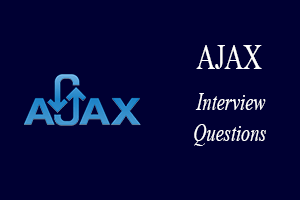
AJAX Interview QuestionsA list of frequently asked AJAX interview questions and answers are given below. 1) What is AJAX?AJAX stands for Asynchronous JavaScript and XML. It is a group of related technologies used to display data asynchronously. In other words, it sends and retrieves data without reloading the web page. More details. 2) What are the advantages of AJAX?
3) What are the disadvantages of AJAX?
4) What are the real web applications of AJAX currently running in the market?
5) What are the security issues with AJAX?
6) What is the difference between synchronous and asynchronous requests?Synchronous request blocks the user until a response is retrieved whereas asynchronous doesn't block the user. More details. Synchronous Request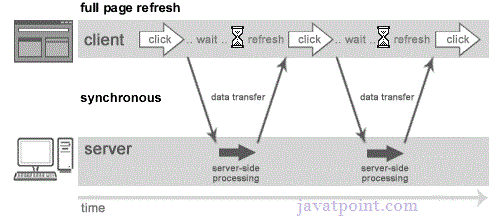 Asynchronous Request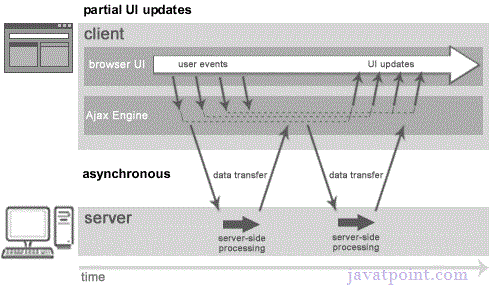
7) What are the technologies used by AJAX?
8) What is the purpose of XMLHttpRequest?
9) What are the properties of XMLHttpRequest?The important properties of the XMLHttpRequest object are given below.
10) What are the important methods of XMLHttpRequest?
11) What are the types of open() method used for XMLHttpRequest?
12) What are the types of send() method used for XMLHttpRequest?
13) What is the role of the callback function in AJAX?The callback function passes a function as a parameter to another function. If we have to perform various AJAX tasks on a website, then we can create one function for executing XMLHttpRequest and a callback function to execute each AJAX task. 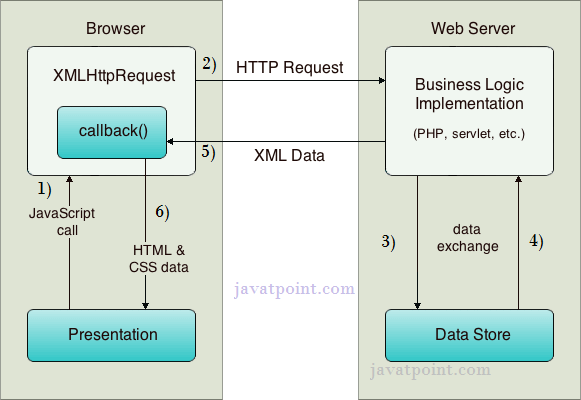
14) What is JSON in AJAX?JSON stands for JavaScript Object Notation. In AJAX, it is used to exchange data between a browser and a server. It is easy to understand, and data exchange is faster than XML. It supports array, object, string, number, and values. 15) What are the tools for debugging AJAX applications?There are several tools for debugging AJAX applications.
16) What are the types of post back in AJAX?There are two types of post back in AJAX.
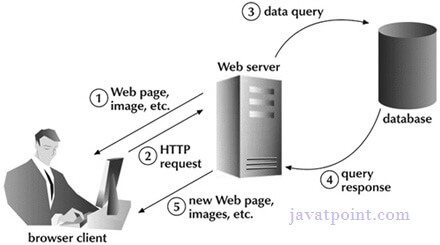
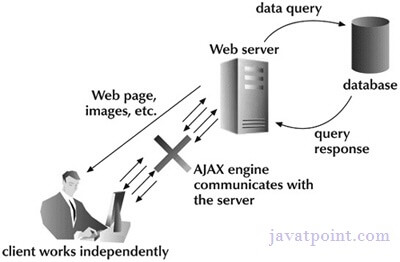
17) What are the different ready states of a request in AJAX?There are 5 ready states of a request in AJAX.
18) What are the common AJAX frameworks?
19) How can you test the AJAX code?JUnit is the open source unit testing framework for client-side JavaScript. It is required to create test cases. The unit test case is a code which ensures that the program logic works as expected. 20) What is the difference between JavaScript and AJAX?
|
You may also like:
- Java Interview Questions
- SQL Interview Questions
- Python Interview Questions
- JavaScript Interview Questions
- Angular Interview Questions
- Selenium Interview Questions
- Spring Boot Interview Questions
- HR Interview Questions
- C Programming Interview Questions
- C++ Interview Questions
- Data Structure Interview Questions
- DBMS Interview Questions
- HTML Interview Questions
- IAS Interview Questions
- Manual Testing Interview Questions
- OOPs Interview Questions
- .Net Interview Questions
- C# Interview Questions
- ReactJS Interview Questions
- Networking Interview Questions
- PHP Interview Questions
- CSS Interview Questions
- Node.js Interview Questions
- Spring Interview Questions
- Hibernate Interview Questions
- AWS Interview Questions
- Accounting Interview Questions







